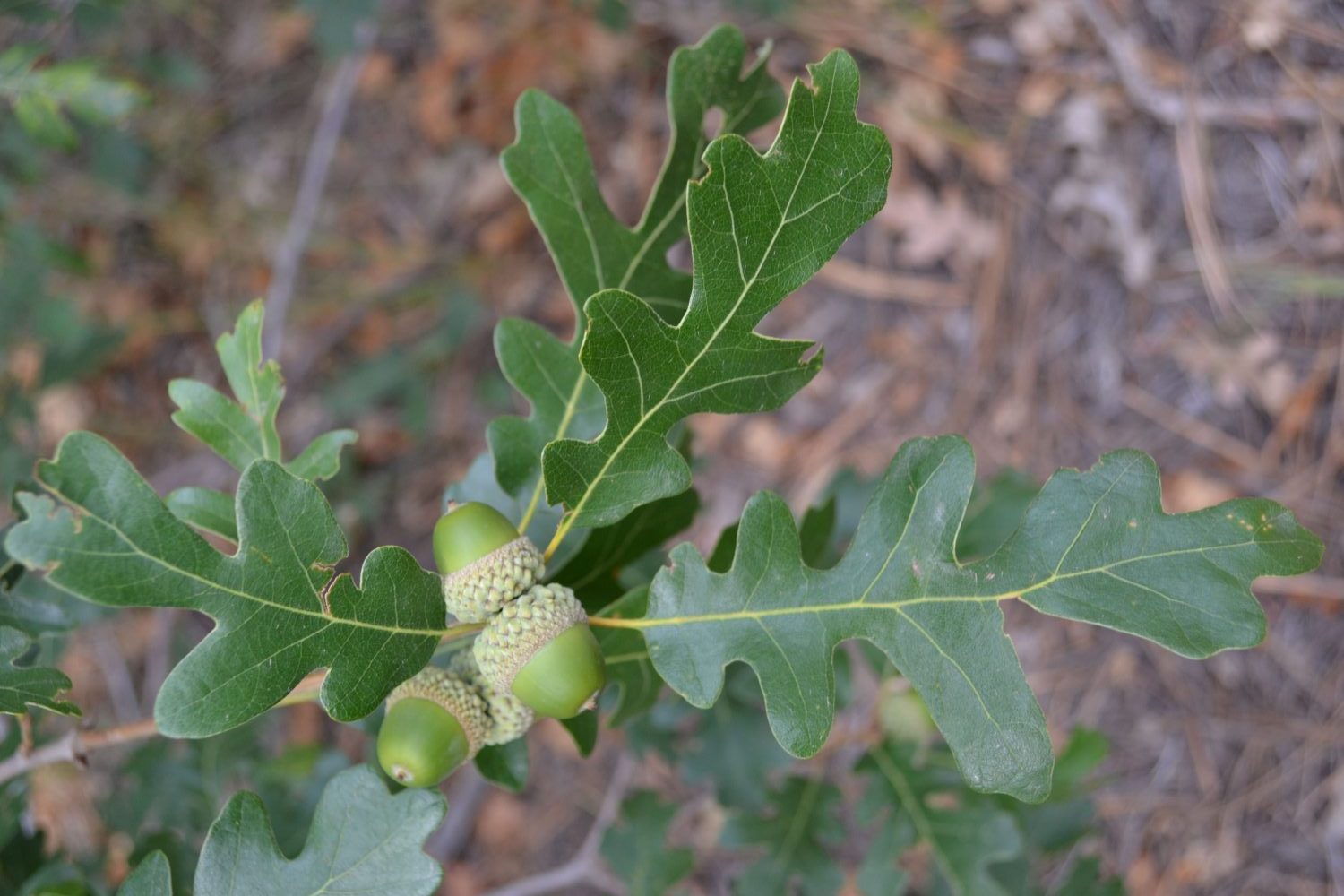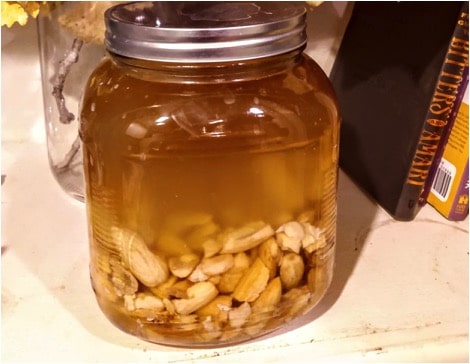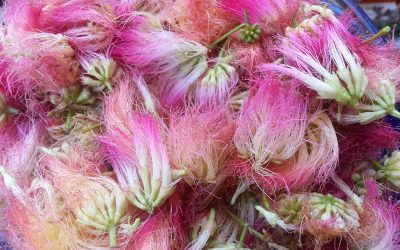Oaks: Acorns, Flour, Perspective

The English words for flower and flour come from the old French word flor or flour. This means blossom or the finest thing. Such as a flower can be. The ground flour from wheat, rye, or acorns, etc. then became known as the finest thing. A fine flour. (Online Etymology Dictionary)
Of course, boundless past and present names for acorn exist. It has been a huge contribution to human survival for aeons. And oaks are keystone species. This produces a habitat where oaks are important species producing an inter-relationship of species dependent on the oak. This provides a system where the oak is the key figure. Keystone species are the backbone providing food, shade, habitat, shelter, understory and a thriving ecosystem. (Smithsonian Gardens, 2021)
I share the process of making acorn flour after a discussion on oaks, tannins, energetics and the cultural uses of acorns throughout time and the present day.
The acorns I used are from nearby Cork bark oaks (which are white oaks). These are the infamous oaks from which cork is sustainably harvested. It is a generations old tradition and there is craftsmanship to the techniques that preserve the tree and produce harvests of cork. This tradition stems from Southwest Europe and Northwest Africa. Also cork bark oaks, Quercus suber, are cultivated for bark in the U.S. (Brooks, 1997.)

Acorns from Quercus suber. The thick bark insulates the Cambium from fire damage (Catry, et al., 2012)

A huge potential for these trees would be widespread cultivation of their nutritious, useful acorns in the U.S. They are heartily enjoyed in other parts of the world as a delicious food crop. These magnificent trees grow in a neighborhood park near me. These big beautiful acorns are ideal to work with for their size and also for a sweet taste. They are not native to New Mexico but do well here if cultivated. These acorns required leaching (to remove the toxicity of tannins) but make for a wonderful flour (more on tannins and leaching, soon!).
More About Acorns:
Acorns are fruits (that are nuts) that come from the oak trees: scrub oak, evergreen oak, from swamps, the deciduous oak, the desert, the tropics (with acorns the size of your fist,) the temperate oak, north of the Arctic circle, and below the equator in Asia (Cobb, 2001). This means that oak species can adapt to a variety of different climates. There is likely a variety of oak that can thrive in your area.
Pollination:
Oaks have two distinct types of reproductive flowers on the same tree. This makes the oak monoecious. Acorns are produced by wind pollination with neighboring oaks. Self pollination is rare but it can occur. Oak trees produce acorns at 50-80 years of age. The pin oak is a red oak tree that produces acorns at 20 years (Bush, 2018).
So, this becomes a cultivated or foraging art. Not to deplete the environment and all the creatures who depend upon acorns. But also to discern if you can forage or cultivate from an existing tree or trees in your yard or vicinity. It is about cultivating relationship.

Different oak species can have sharp pointy leaves or rounded lobed leaves

Nutrition:
All acorns are edible. Some are edible straight from the tree. Most need removal of tannins to become edible. So all oaks whether a white oak or a red oak produce nourishing acorns. Corn is an old English word for grain. Corn means grain amd grain means starchy, nutritious food. Acorn is a starchy nutritious food. Acorns are high in carbs. Our brain needs carbs that are broken down into glucose in order to thrive.
Note the photo below of a shelled acorn. The papery layer will be completely removed as it is high in tannins.
Bainbridge (2001), (chart below) includes nutrition components by percentages of weight of each acorn an average of many species of acorns combined.
Water: 8.7% – 44.6%
Protein: 2.3% – 8.6%
Fat 1.1% – 31.3%
Carbohydrate 32.7% – 89.7%
Tannin <.1- 8.8%
Acorns also contain vitamin C, beta carotene, and calcium is accessible when cooked with wood ash or lye. Many essential amino acids and more trace minerals are likely to be found in acorns (Bainbridge, 2001) as well as magnesium and phosphorus (Food and Agriculture Organization of the United Nations).

Life with Acorn:
Long before cultivation of grain and other crops acorn has been a mainstay of ancient cultures around the world. Artifacts such as mortars have been found in Europe and other places around the world (Rodriguez, 2013). This signifies the importance of acorn’s huge contribution to the food of ancient people for thousands of years. Acorn is still a popular food in Spain, Portugal, Italy, Morocco, Turkey, Korea, Japan, India, China, some parts of the U.S., and more. It has been and remains an important historical foodstay for many Native Americans in present day California and Arizona. Also for Native Americans in the Northeast and elsewhere on the continent use of acorn and preparations of ceremonial foods are still prevalent (Angier, 1974).
The emory oak is an ancient, revered species to the Ndee people also known as the Apache people. The emory oak grows in southwestern New Mexico, Arizona, West Texas and Northern Mexico in areas above 4,000 feet. The emory oak has a delicious acorn nut that is edible without need for leaching. The emory acorn makes its daily way to the Western Apache’s table. “(The emory oak acorns are) … a culturally important food for the Western Apache. Ground acorn sits on tabletops next to salt and pepper shakers, to be sprinkled on venison, rolled into tortillas, or stirred into gravy” (Sevigny, 2020).
Forests have been stewarded and managed for fire maintenance and prevention for centuries but also as orchards and food forests by Native populations. Specifically here for acorn crops (Indigenous Uses, Management, and Restoration of Oaks of the Far Western United States, USDA, 2007).
What are Tannins Anyway?
Have you ever let your black or green tea bag steep too long? You know immediately when you taste the tea. What you are experiencing are tannins. Tannins have a drying, astringent, (a pulled together) effect on the body. Herbalists sometimes use tannin rich herbs such as (oak bark, leaf, or twigs as a tea) in small or moderate doses to add tone to a condition in the body such as varicose veins. Or as a mouthwash for sore gums. Topical use is the application here. Tannins act in direct contact with tissues to tone them.
Tannins are phenolic compounds. Phenolic compounds are known for having antioxidant activity in the body which scavenges free radicals. Phenolic acids found in tannins bind to minerals and proteins. This is why tannin rich plants such as oak (bark) can be used as a tea to convert animal hides into tanned leather. The Old German word tanna translates to the word Oak. The word tannin is derived from this word (U.S. Forest Service). Tannins developed in plants as a way to deter browsing from animals and insects.
Oak is not to be confused with poison oak. Which is a different, toxic plant that has similar looking leaves to some of the species of oak. Always know what plant you are working with. Exact identification is necessary every time! I wouldn’t want that one time of doubt or impulse to be a disaster. Poison Oak

Energetics:
Tannins have many useful energetic properties. Tannins are astringent in nature. They have a toning or contracting quality. Instead of loosening tissue they bind or pull together instead. That is the energetics of tannins.
Energetics are something we experience every moment we are alive. Energetics have qualities we can readily feel and identify. We stand in the shade to cool off. Or like a cat we sit in the sun slanting through a window to warm up. We can be drawn to cooling foods such as cucumber or melon in the summer. Spicy foods can warm us, enliven us, nourish us. I feel drawn to the vitamin C and the spice of chile pepper. Have you ever craved oranges or chile? These are natural ways we incorporate the properties of herbs and foods in our lives. So, these are examples of energetics. A less common word for very common experiences.
+ Join Donna for the upcoming Energetics & Constitutions class on November 6, 2021 +
Have you ever had a minor burn or sunburn? A cool temperature tea of oak bark, rose leaf, black tea or raspberry leaf can be very soothing to the mild burn. It can cool the heat of a burn and soothe the tension of the skin that starts to expand and blister. It can ward off mild sunburn blistering. The tannins in the tea help bind the skin tissue and keep the skin from expanding. This binding of tissue can serve as a protective, healing layer in this case.
There’s Been Some Talk About Leaching:
It’s not a word that is used very much except by people who eat or want to eat acorns. Also you may have heard the expression of nutrients being leached out of the soil. This would be due to water soluble nutrients being leached out by rain, flooding, overwatering, etc.Tannins are highly soluble in water. The tannins will dissolve easily in water and leave the acorns with a fresh tannin free flavor. This is why acorns can be leached so easily. Because of this solubility. There are two main ways to leach acorns as many of you have already heard–cold water leaching and hot water leaching. More on this below.
(I did not learn this by myself. I have been researching for a number of years and it wasn’t until I moved to an area near the park that houses the magnificent cork oaks and a bounty of fresh acorns that I decided to give acorn processing a try.)
Gathering:
Traditional knowledge about harvesting acorns and managing oak forests is due to ancestors of lands who have stewarded this knowledge for centuries. I am grateful. I have tried both methods of leaching acorns and I will share my steps of preparation with you.
1. Know your tree. Identify it as an oak tree. Is it thriving? Is it the mother tree? I always give thanks to the mother tree and keep from harvesting. Even if the acorns are on the ground. I look for trees nearby or another location. Sometimes I do not harvest at all. Many times I do not. How are the weather conditions? Has it been a good year for acorns? Is there plenty to spare?
Don’t despair! Recipes for acorns can be made with edible chestnuts. Not horse chestnuts! (Identification is key.) Edible sweet chestnuts are cousins to the oaks. They are both in the Fagaceae family and just so happen to both be edible.
2. Gather your acorns from a proper source. Get to know and research your tree. When do acorns normally develop and fall? Is climate change altering the process? For example, too much rain will keep acorns from developing due to its interference with wind pollination.
3. I pick up acorns from the ground that have just fallen. Look for brown nuts that do not have a tiny weevil hole in them. Green acorns can brown up in a few weeks.
4. Dry these one layer thick on a tray. Turn them over. Use the sun or a very low oven or dehydrator to dry them. I air dried them for a month, inside a dry climate, low humidity environment.
(The photo below shows the amount of foraged acorns I gathered.)

Crack, Inspect and Pry
1. I used a mortar and pestle. Just crack the dried acorn once or twice and you can easily peel/pry the nut shell open to harvest your acorns. Pascal Bauder has a method: Use a folded towel over a cutting board. Place your acorns on the towel. With a sharp knife (safely) cut the acorn into quarters. And, remove the nut. The towel prevents bounce. Improvise, but the mortar and pestle method worked well for me.
2. Inspect your acorns and toss out any moldy ones. You will know as it will be completely moldy. Cut out any discolored spots. Toss any that look weevil infested. Of course some people say eat the weevil. But, I would rather not knowingly do so.
The acorns are a light tan creamy color. They can oxidize (due to contact with air) which is fine and turn brown. Some people prefer a darker flour anyway. Or toss your shelled acorn into water right away. Don’t forget to rub off or peel off the outer skin. You can do this by placing them in a basket or bowl and rubbing them together to rub off the tannin rich skins. This is a time honored practice of winnowing.
3. Coarse chop your acorns into bits. Not tiny, they can be chunks. Mine were large chunks. Taste your acorn. Is it a little sweet with a hint of tannin? Is it bitter with an intense sensation of tannin? Your taste buds will be a very good guide as you go! Trust your taste buds they will let you know the slightest hint of tannin. And, any remaining tannin will dominate the flavor of your food.
Which method to Leach Acorns?
1. Some people prefer to use hot water to leach acorns as heat can speed up the process. Hot water leaching is used for a less starchy process. Good for making acorn patties for dinner or for adding the dehydrated chunks to soups, etc.
2. Cold water leaching is often used when wanting to make flour. The starchy element helps the bread to bind more.
Personally, I feel either method will make a good product either way.

Cold water leaching
How to Hot Water Leach Acorns
1. Get two pots ready and boil water in both pots. Add your acorns to boiled water only, in 1 of the pots. (Bringing cold water to a boil with the acorns in it succeeds in setting the tannins–something you don’t want.)
2. Boil (in already boiling water) for 15 minutes. The water will start to look brown or golden as the tannins release. Drain the boiled water into a colander. Careful! Do not rinse or cool off your acorns. Add them to that 2nd pot of boiling water you have already gotten ready.
3. Taste a tiny piece as you go. How does it taste? Keep repeating the process until all hints of tannin are totally undetectable. This will make a huge improvement in your acorn product.
4. Repeat process of exchange with boiled water (keeping two pots boiling at all times). Continue until water starts to run clear but especially when you cannot taste a trace of tannins anymore. The effort will pay for itself through the good flavor.
How to Cold Water Leach Acorns
1. Soak and cover your acorns in cold or room temperature water.
2. Drain and refill the water every 8 hours, taste a bit of acorn. Does it still taste bitter/astringent? Does it have a pleasant taste?
3. If the acorn tastes pleasant you are finished. If it still tastes of tannins, drain water and soak again.
4. This process of cold water leaching can take anywhere from a day to a week. With the acorns I used it took 3 days.
5. Draining and adding fresh water is essential. Acorns can go rancid easily if sitting in water too long without draining it. The soaking acorns need to be refreshed with new water exchanges every day. I changed the water 3 times a day.
Other methods:
- Some people will run a faucet over the acorns until tannins are removed.
- A traditional way was to find a clean water source such as a stream and immerse your acorns in a basket, etc. and remove tannins that way.
- Other methods were to bury acorns in mud or the earth until they tasted sweet.
Once you have your acorn ready and free from tannins. You can use the fresh acorn to make breads, vegan cheeses, acorn patties, etc.

Making Acorn Flour:
Squeezing out excess water then I weighed it down to release more liquid.
Drying out the damp acorn meal on a low heat frying pan, I ground it up to a finer meal.

How I Made Acorn Flour
(Cold Water Leached Method)
You can dry the acorn and grind it into flour. Or it can be used freshly made after leaching (hot or cold method). Fresh leached meal or flour will be damp so this might slightly affect how much liquid you use in your recipe. *Refrigerate acorn flour for storage as its high oil content can go rancid quickly.*
1. After a quick rinse (don’t rinse all the starch away), I chopped the leached acorn into small pieces, added a small amount of fresh water and ground it up in a food processor into tiny granules.
2. I then scooped the mixture into an unbleached cotton bag. I squeezed the moisture out as much as I could. (You can use a nut milk bag, doubled up cheesecloth, a fine mesh strainer, etc.) I also set a weight on the bag and squeezed out any excess. I let it drain that way for 5-6 hours. See photo above.
3. The acorn flour (meal) was still a little damp so I put it in a very low skillet and stirred it until all the moisture evaporated. See photo above.
4. I ground up the acorn meal again in my food processor. I sifted out any larger pieces of meal. And you can regrind if you have a lot extra larger bits. This produced a nice cornmeal texture. See photos below.
Most people use a replacement of up to ¼ cup to 1 cup of acorn flour for wheat flour in the recipe. Recipes vary.

Making Acorn Flour:
Grind and sift any larger bits. Regrind if needed. Completely dry acorn can be difficult to grind.

Make your recipe with acorn flour!
I made mini muffins. Here is the recipe I used from Steven Golieb, The Cook’s Cook.
I opted for the author’s recipe for a less traditional option:
- 3 cups acorn flour
- 2 eggs
- 1.5 Tbsp butter or coconut oil
- 1¼ cup nut milk
- 2 tsp baking powder
- ½ cup sugar
- pinch of salt
- if desired add spices such as cinnamon, nutmeg, allspice, sumac powder…
Bake at 350° for 15-20 minutes.
I love this recipe because it tastes great, is very moist and acorn flour is the only flour used! If you make nut milk, leached acorn milk preparation may be an option to use.


Oak in Perspective
Acre and acorn are derived from the same root word.
Our language reflects the bounty of the land.
The generous oak remembers us and feeds us.
As one who always has,
An acre of acorns reminds us to remember.

Citations
Online Etymology Dictionary. By Douglas Harper, 2001-2021.
A Live Oak. Smithsonian Gardens; Smithsonian, 2021.
A Literature Review of California Domestic Cork Production. By William H. Brooks, USDA Forest Service: 1997.
Cork Oak Vulnerability to Fire: The Role of Bark Harvesting, Tree Characteristics and Abiotic Factors. by Catry, Moreira, Pausas et al., PLOS ONE JOURNAL; 2012.
In Search of the Edible Acorn. By Donald Cobb, International Oaks no. 12., 2001.
How Many Years Can it Take for an Oak Tree to Produce its First Acorn? By Joshua Bush, SFGATE., 2018.
Acorns as Food. By David A. Bainbridge, www.academia.edu 2001.
The Food and Agriculture Organization of the United Nations, Chapter 8. http://www.fao.org
Acorn Bread in Iron Age of North-western Iberia, from Gathering to Baking. By Estevo Amada Rodriguez, Exarc Journal Issue 2013/3., 2013.
Field Guide to Edible Wild Plants. By Bradford Angier, Stackpole Books; 1974.
Earth Notes: The Emory Oak Project. By Melissa Sevigny, https://www.knau.org. 2020.
Indigenous Uses, Management, and Restoration of Oaks of the Far Western United States., by M. Kat Anderson, USDA, NRCS, 2007.
Tannins. https://www.fs.fed.us/wildflowers/ethnobotany/tannins.shtml
Poison Oak reference: https://en.m.wikipedia.org/wiki/Toxicodendron_diversilobum
Gluten Free Acorn Bread. By Steven Golieb, The Cook’s Cook. 2021. https://thecookscook.com/recipes/gluten-free-acorn-bread/



